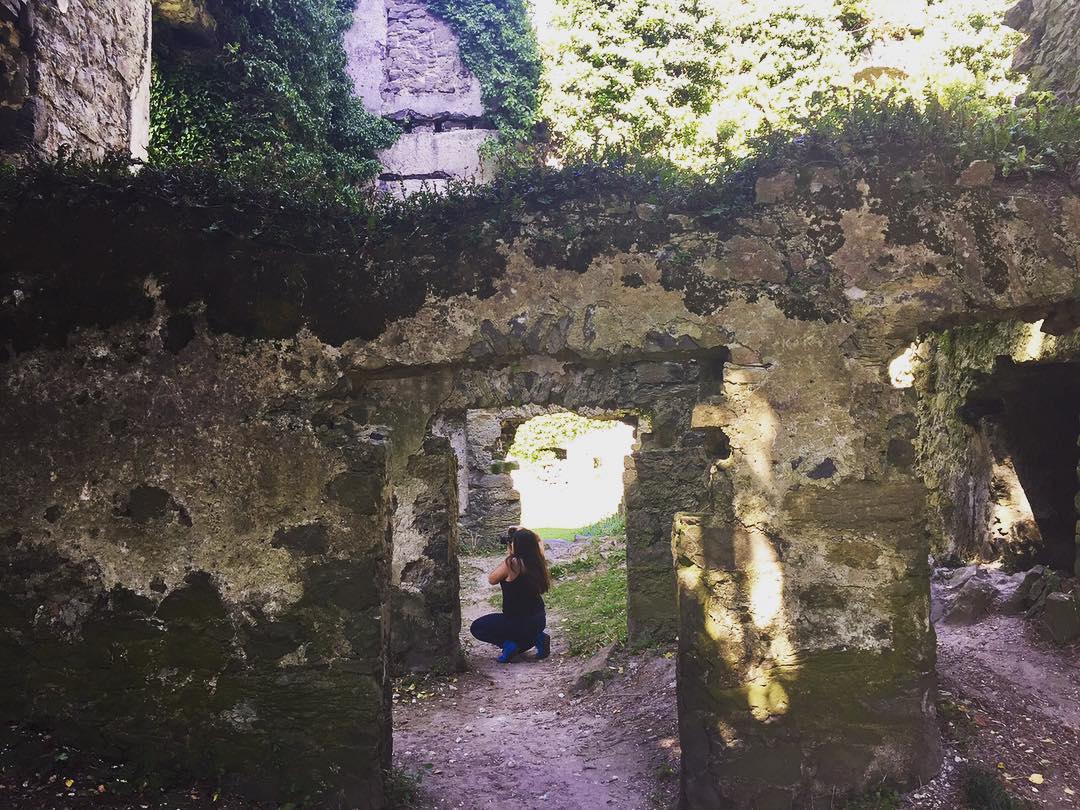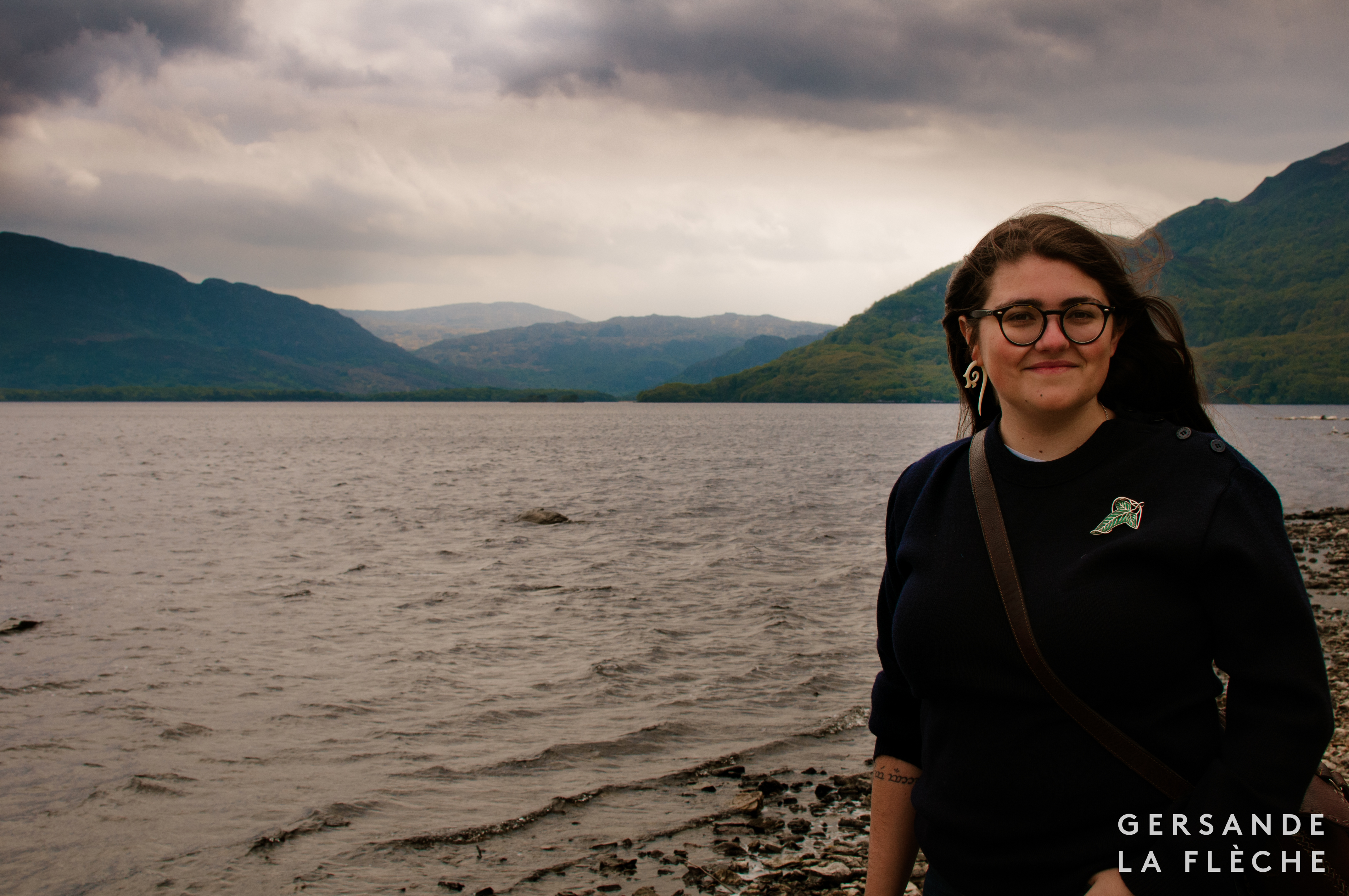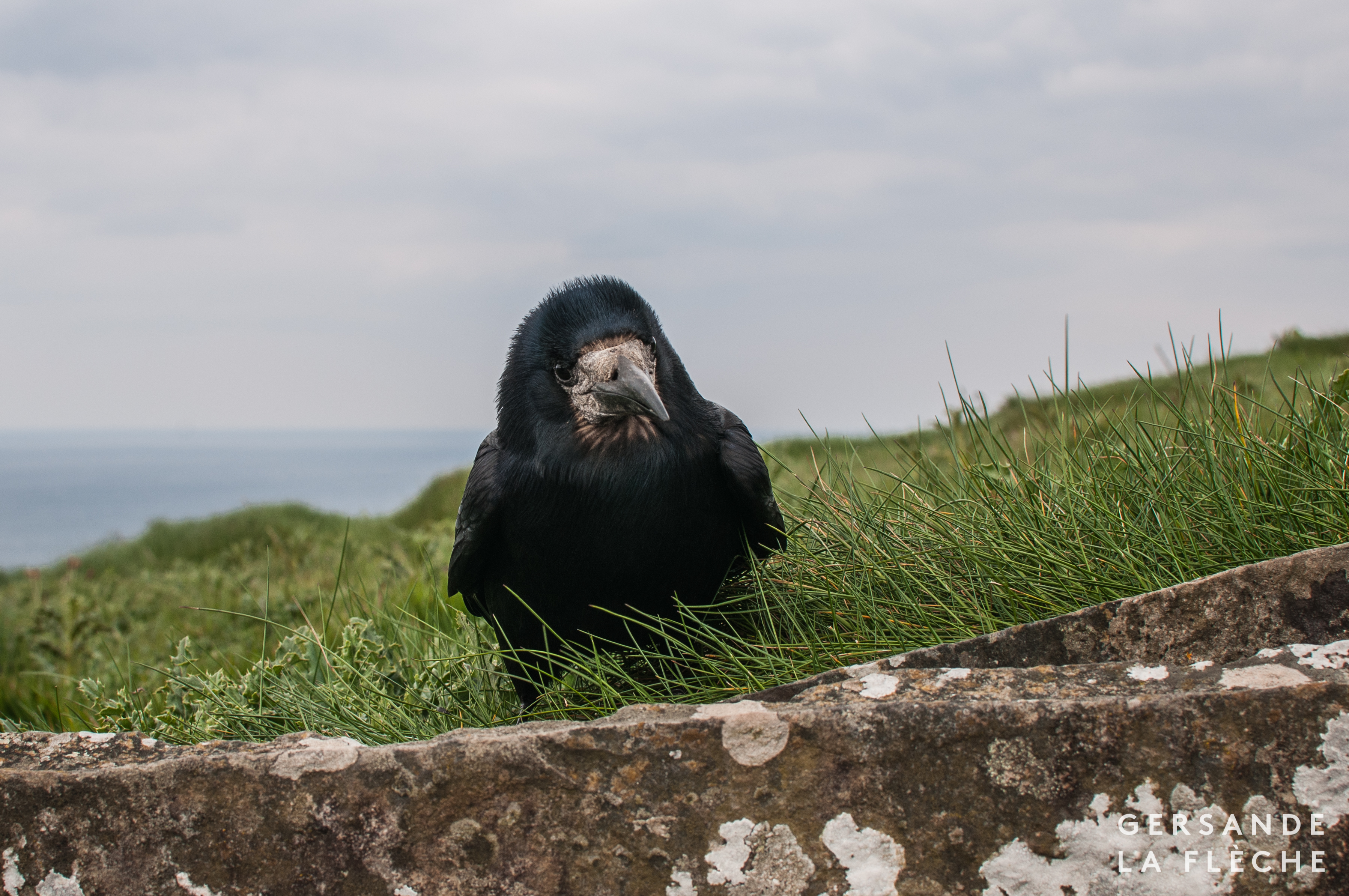Journey westward: looking for where the tree takes root

this is freedom. This is the force of faith. Nobody gets
what they want. Never again are you the same. The longing
is to be pure. What you get is to be changed.
"Prayer" by Jorie Graham
I spent ten days in Ireland.
Ten days is not a terribly long time, but it was time enough to have some fun, make a few observations, and formulate an impression. Some of these are small and mundane, funny even: I discover I am somehow able to digest milk and dairy products in Ireland without any problems—cue my immediate and delighted eating of all the different butters, creams, and dairy products in sight—and I find myself hopelessly unable to navigate the streets as a pedestrian unused to left-hand traffic. Also, why does it take forever for the pedestrian crossing lights to turn green? And once that interminable wait is over, how is there only somewhere between 3-6 seconds to get to the other side? (I could sometimes distinguish locals from tourists this way, because tourists were usually timid enough to actually press the button to wait for the light to change, whereas locals often enough simply ignored the traffic light and controls altogether and jaywalked.)
From May Day until the 10th of May, our exit from the country, my journal entries are their usual jagged weirdness, part recollection and part wish-list for future aspirations and hopes, and part drafts of other things completely unrelated to Ireland or what I'm currently doing. Clues in there as to how I was feeling: curious, amused, annoyed, enthralled. In a fit of sleepless, jet-lag-induced inspiration, I produced a photography-heavy and quotation-heavy short blog post of my first 36 hours in Dublin. I thought about producing blog posts like that one for every major location discovered, every city visited, but there simply wasn't enough time as we were in a new location or city almost every 48 hours, and I started getting used to the time difference and was eventually getting enough sleep every night.
In my journal, along with the pressed dandelions and leaves I collected on the cliffs of Moher and a specimen of ephemeral bluebells I found outside a ruined abbey in Killarney, I recorded bird sightings and particulars—mostly crows, but starlings, sparrows, blackbirds, gulls, and robins also appear:
- In Galway I stand on the edge of the port and watch a crow and a sea gull attack each other. Their first clash occurs in the crest of a wave, and then again high, high up in the air.
- Near the ruins of a castle which burnt down in an enormously violent and tragic manner on the shores of the River Corrib some 100 years ago, I spend some time following the dragonflies bobbing along just above the surface of the quiet waters. The ruins of the castle itself are now are the kingdom of dozens of blackbirds holding court under the waxing Scorpio moon.
- In Moher, a crow lands an arms' length from me on the rocky cliffside, and watches me as I take its picture, tilting its head from side to side to get a better look into the lens of my camera.
- In Killarney, on our way to the lake of learning, Lough Leane (pronounced “Lock Leen”), I suddenly spot by the side of a quiet road, less than ten meters through the branches, a herd of wild red deer and their fawns who keep an eye on us as they soundlessly depart.
 Photograph by the author of a herd of deer on Innisfallen Isle in Lough Leane.
Photograph by the author of a herd of deer on Innisfallen Isle in Lough Leane.
When I was very young, I remember the urgent panic of realising that I would never be able to recall in perfect detail everything that was happening to me. It might have been one of the reasons I started writing things down, or why I started doodling. When I got a little older, I used to go through dozens of disposable cameras in a mere matter of weeks. I still have a shoeboxes full of those badly lit, mostly incomprehensible photographs.
I guess as a result, or tangentially, it’s no surprise that I’m part of the “selfie generation.” I’m pretty active posting photos on Instagram (and other places) and while I’m usually more comfortable behind the camera, cameras don’t really faze me when I'm in front of them, either.
Maybe it’s because I’m one of those darn kids today worshipping that “cult of me” (as I recently heard it called) but I find the medium of photography very comforting. A common criticism lobbed at the “selfie generation” is that we are not living in the moment, and that our inability to put the camera down is symptomatic of FOMO (fear of missing out), and yet another sign that we are over-anxious, technologically obsessed, validation starved, and perpetually distracted.
To me however photographs have that salutary quality of being free of language, free of text. It doesn’t matter whether you speak French or English or Spanish or anything else—photographs communicate without need for grammar and syntax. They have a vocabulary altogether different, and when I was a little kid struggling through and with language, photographs were relief; I remember quite well that childish hope that a book would be full of pictures. I experienced pride and maturity (and bittersweet disappointment) when I opened a book and found it lacking illustrations.
Taking photographs pushes me—I might go and climb a fence, or walk a little higher up a mountain, or cross the street and find a different sidewalk—because I’m looking, always looking, for that angle in which the landscape communicates what it is to me in that moment. Photography is not purely passive and is not purely voyeuristic, at least I don’t think it was in that context.
 A photograph of the author taking a photograph inside an old castle ruin outside of Menlo, Ireland.
A photograph of the author taking a photograph inside an old castle ruin outside of Menlo, Ireland.
For almost half my life, I have lived in a different city and country from my siblings, and when the idea came to travel to Ireland and the UK together this May, I thought amusingly that we were reviving a tradition that had ended almost ten years prior. My sibling and I used to travel every spring around the Easter holidays to visit relations in France, and for almost a decade the ritual went uninterrupted, until I turned 15. Our paths diverged then, as they sometimes do, and within a year my sibling and I would live in different countries, seeing each other usually only for a few days or weeks around Christmas and other holidays.
The two of us travelled during our ten days in Ireland in a kind of quiet, observant solitude, with a few shining exceptions. And there were a few somber moments on the trip. We were abroad on the one year anniversary of our grandfather’s death, a death that occurred within hours of my sibling’s life-saving, life-changing thyroid surgery. In a pub in Killarney, amongst a crowd of locals and foreigners, while a folk band began to play a lively dancing song, I burst into tears when my sibling and I spoke of my grandfather and of the tumultuous few days that surrounded his death, when she was dealing with the realities of insurance, post-op recovery, and the implications of a thyroid tumour, and the fact that her grandfather had just died and she would not be able to travel to his funeral.
Thanks to the pub’s dim lighting I could sort of pretend I hadn’t just burst into tears, and the music allowed me to recollect myself. A woman asked me to dance the traditional way and for some reason, even though no one else was dancing, I said yes. Maybe it’s because I’m just another fool when women ask me to dance, but also because I have no idea when I may be asked to dance again by someone who actually wants to teach my sorry butt how to dance, but I accepted her proposal (and proceeded to quite thoroughly make a fool of myself).
The night of our return in North America from Ireland and Scotland, my sibling and I were asked by my mother if we especially liked Ireland. My mother shared that she sometimes feels connections to places where her ancestors come from, and she was wondering if we'd felt any such connection to Ireland. My siblings and I are descended from that Emerald Isle through my father's side of the family. My Irish great-grandmother's name was Jane Brady, and she married my Kansas-born Québecois great-grandfather Léo Richer La Flèche in 1920.
My mother's question reminds me of the fact that while my siblings and I are indeed quite the cultural hybrids, my mother also felt that cultural confusion acutely growing up with a Colombian mother and an Italian father. Born in Montréal, my mother shared her childhood and teenage years between Antigua, the Canadian-Italian east end of Montréal, and a boarding school in Surrey, England. She, like me, like my siblings, could trace and follow her family and ancestors through different languages, continents, traditions and races. There's a bewildering characteristic to those who are from “everywhere” because in practice it mostly seems like you come from nowhere.
The complicatedness of your family tree creates an unbelonging from every culture your parents or grandparents grew up in, and ends up making you feel uprooted if not flat-out rootless, ready to be swept away by the next strong current.
There were times, in Ireland, where I felt that unbelonging very keenly. I was most certainly not alone. Almost every major tourist shopping area we saw, we overheard foreigners discussing their Irish ancestors who had gone to America or elsewhere. At several shops at the cash register there was a computer which shopkeepers used to trace the origins of the family names of the great-grandparents and great-great-grandparents of tourists. In Galway by the train station, I looked up and saw, to my complete surprise, a sort of heraldic banner for the family name Brady, my Irish great-grandmother’s last name: on a black canvas, a hand pointing to the golden sun. In that moment, I did not feel particularly connected to anything—if anything it seemed the gulf between myself and my great-grandmother, who died long before I was born, had widened.
But I did feel connections to Ireland. When that lady in Killarney took my hand and tried to teach my uncoordinated self the right sequence of steps and laughed at the jokes I made when I couldn't quite get it right. When an older man, who had been alternating between speaking Gaelic and English and whose name was Patrick, asked me what my name was and laughed at my answer, saying in a straightforward but not unkind manner: “Oh dear, that's a mouthful." When I spoke with the bus driver in County Clare for over an hour, and we talked Brexit, Trump, and small town Irish economics woes.
When I stood on the docks in Galway and saw the old fishing boats on their sides sitting on carpets of drying seaweed at low tide. I thought of the song, Dúlamán, about Irish hair and Irish seaweed, and found that the Atlantic even on the West Coast of Ireland was somehow as familiar to me as the Atlantic on the East Coast of Canada. I recognized the smell of fish and salt and drying seaweed. I recognized that interminable animosity between sea gulls and crows, which I remember chronicling as a child in Nova Scotia. I recognized the chill in the air as the north-eastern wind tried to cool down the warmth coming from the sea, from the Mexican Gulf Stream.
 A photograph of the author in front of storm clouds, and the silvery lake of Lough Leane, the Killarney mountains in the background.
A photograph of the author in front of storm clouds, and the silvery lake of Lough Leane, the Killarney mountains in the background.
In Killarney, in the National Park, my sibling and I arrived early enough to Lough Leane to be able to hire a small motorboat to carry us over the lake to the Isle of Innisfallen, to the ruins of an ancient abbey where the ancient king of Ireland Brian Boru is said to have studied and learned reading/writing. I urged us to cross the lake swiftly, because I was afraid the clouds above us would continue to darken and threaten rain, and because I wanted to take advantage of the light playing against the shadows of the Gap of Dunloe, and the Torc and Purple Mountains. On the Isle of Innisfallen I stood underneath a Yew tree that was planted there in 1280 and listened to the wind howl through the ruins and its evergreen needles. That beautiful, poisonous Yew tree, tree of the Dead and bearing deadly seeds, sacred to the ancients and to the Christians. Crows were cackling incessantly up in her branches. My sibling and I had the whole island to ourselves, and when we ventured further in we discovered about 20 or so red deer enjoying the calm morning out in a field.
And when that crow in Moher looked straight at me! The photographer’s gaze is a well-documented one, as is the tourist’s or the foreigner’s gaze, but then all of a sudden, it was as if the land was looking right back at me, just as curious, just as amused, just as wondering.
 A photograph taken by the author of a crow looking straight at the camera, its head tilted slightly to the side.
A photograph taken by the author of a crow looking straight at the camera, its head tilted slightly to the side.
